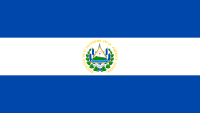
Photo from wikipedia
Establishment of new populations is contingent on overcoming abiotic and biotic barriers. While this applies to all species, these hurdles are at the forefront of invasion biology where prediction, prevention,… Click to show full abstract
Establishment of new populations is contingent on overcoming abiotic and biotic barriers. While this applies to all species, these hurdles are at the forefront of invasion biology where prediction, prevention, eradication, and control strategies depend on an understanding of these processes. Terrestrial Arundina graminifolia and epiphytic Dendrobium crumenatum are two non-indigenous orchids spreading throughout Puerto Rico. The two species have acquired a native herbivore and seed predator, the orchid-specialist weevil, Stethobaris polita. With recently acquired presence records of the three species, land cover data and downscaled climate variables, we modeled their potential distributions under current conditions and also those projected under the least and most extreme climate scenarios for 2050 and 2070. We show that D. crumenatum flourishes in urban environments which also provide refugia from S. polita, whereas there is currently limited refugia for A. graminifolia from S. polita attack, as this orchid has similar climatic niches as the weevil. Projections into all climate scenarios suggest range retractions for all species, with a decreased extent of both orchid populations subject to S. polita attack. Thus, we illustrate for island invasions how climate change will likely alter the distribution of acquired biotic interactions.
Journal Title: Biological Invasions
Year Published: 2021
Link to full text (if available)
Share on Social Media: Sign Up to like & get
recommendations!